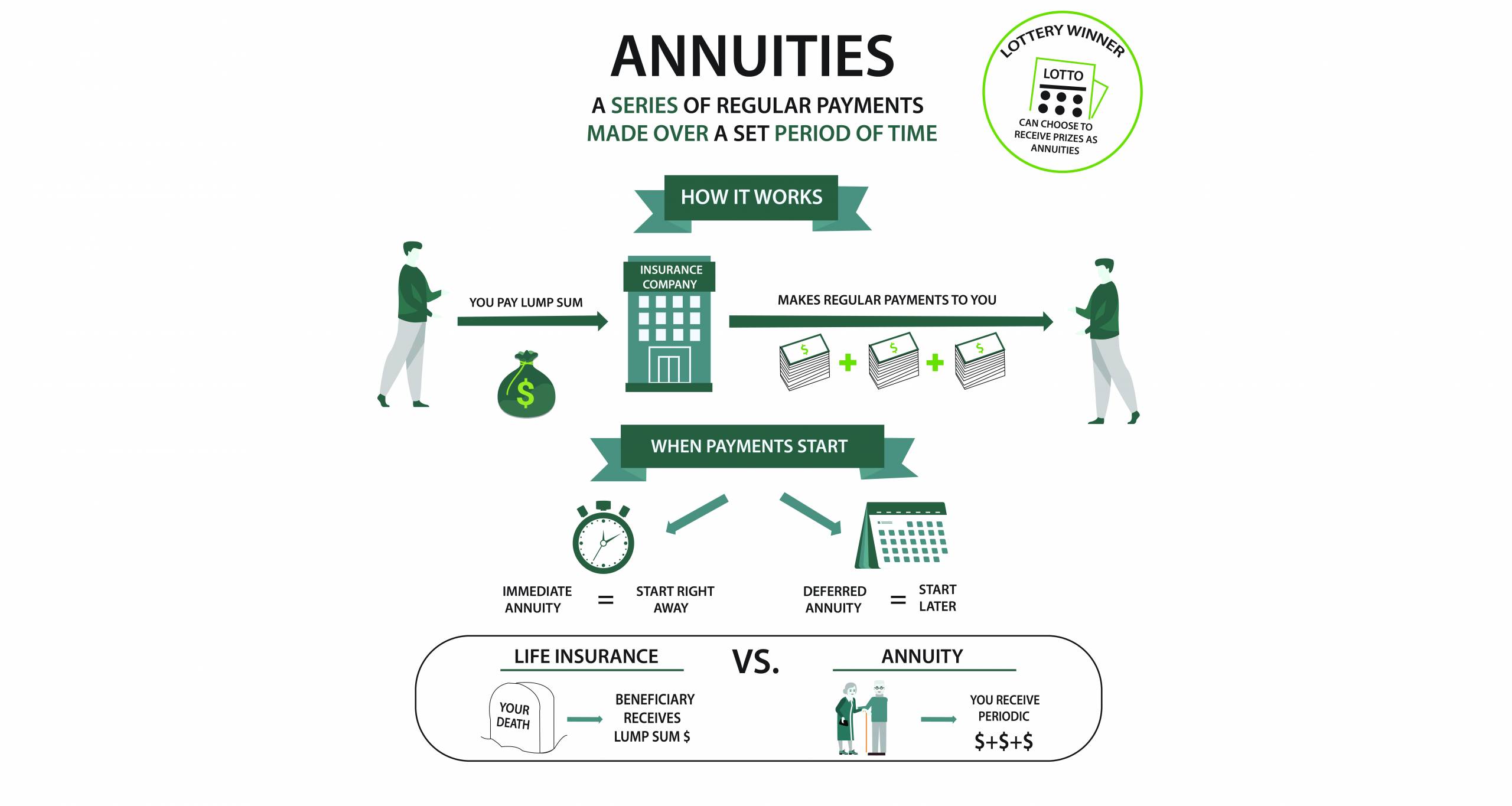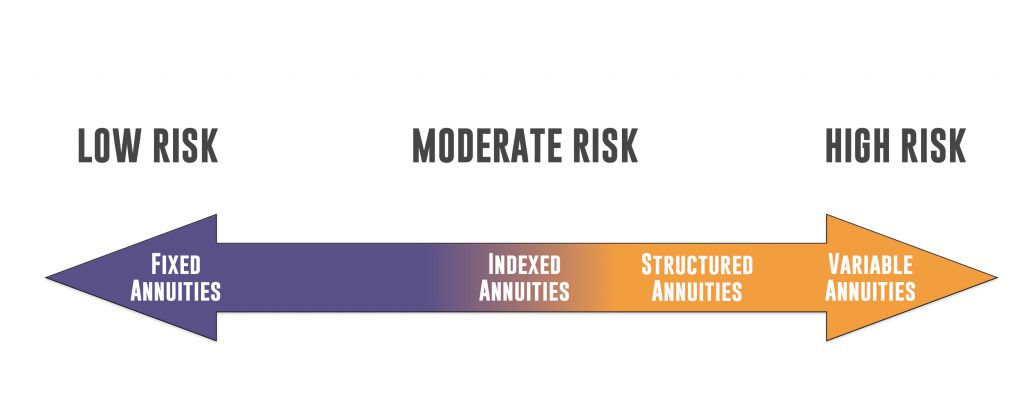All Categories
Featured
Table of Contents
There are 3 kinds of annuities: repaired, variable and indexed. With a taken care of annuity, the insurance provider ensures both the price of return (the rate of interest rate) and the payout to the investor. The rate of interest on a repaired annuity can transform over time. Typically the rate of interest is fixed for a number of years and then changes periodically based on existing prices.
With a deferred fixed annuity, the insurance provider consents to pay you no much less than a defined interest rate during the time that your account is growing. With an instant set annuityor when you "annuitize" your postponed annuityyou obtain a predetermined set quantity of cash, normally on a month-to-month basis (similar to a pension).
And, unlike a taken care of annuity, variable annuities do not supply any warranty that you'll make a return on your financial investment. Rather, there's a threat that you might actually lose money.
Breaking Down Your Investment Choices A Closer Look at Variable Annuity Vs Fixed Indexed Annuity Breaking Down the Basics of Retirement Income Fixed Vs Variable Annuity Advantages and Disadvantages of Variable Annuity Vs Fixed Indexed Annuity Why Annuity Fixed Vs Variable Can Impact Your Future Deferred Annuity Vs Variable Annuity: A Complete Overview Key Differences Between Different Financial Strategies Understanding the Risks of Variable Annuity Vs Fixed Annuity Who Should Consider Strategic Financial Planning? Tips for Choosing Variable Vs Fixed Annuity FAQs About Planning Your Financial Future Common Mistakes to Avoid When Choosing Fixed Income Annuity Vs Variable Growth Annuity Financial Planning Simplified: Understanding Your Options A Beginner’s Guide to Variable Annuity Vs Fixed Indexed Annuity A Closer Look at Immediate Fixed Annuity Vs Variable Annuity
As a result of the intricacy of variable annuities, they're a leading resource of financier grievances to FINRA. Prior to getting a variable annuity, thoroughly checked out the annuity's prospectus, and ask the individual offering the annuity to explain all of the product's functions, riders, expenses and restrictions. You should likewise understand exactly how your broker is being made up, including whether they're obtaining a compensation and, if so, just how a lot.
Indexed annuities are intricate financial tools that have attributes of both fixed and variable annuities. Indexed annuities typically use a minimum guaranteed rate of interest integrated with a rates of interest linked to a market index. Numerous indexed annuities are tied to wide, widely known indexes like the S&P 500 Index. Some use other indexes, consisting of those that represent various other segments of the market.
Comprehending the features of an indexed annuity can be confusing. There are a number of indexing methods firms make use of to calculate gains and, since of the selection and complexity of the techniques utilized to credit history interest, it's tough to compare one indexed annuity to another. Indexed annuities are normally categorized as one of the complying with two types: EIAs provide an ensured minimum rate of interest (typically at the very least 87.5 percent of the premium paid at 1 to 3 percent rate of interest), in addition to an extra rate of interest price connected to the performance of one or more market index.

Conventional capitalists that value safety and security and stability. Those nearing retired life that intend to sanctuary their assets from the volatility of the stock or bond market. With variable annuities, you can spend in a selection of safety and securities including supply and mutual fund. Securities market performance identifies the annuity's value and the return you will certainly obtain from the money you invest.
Comfortable with fluctuations in the stock market and desire your investments to equal rising cost of living over a long period of time. Young and intend to prepare economically for retired life by reaping the gains in the supply or bond market over the long-term.
As you're developing your retirement cost savings, there are several methods to stretch your money. can be especially valuable cost savings tools since they assure an earnings amount for either a set amount of time or for the remainder of your life. Fixed and variable annuities are 2 choices that supply tax-deferred growth on your contributionsthough they do it in different ways.
Exploring the Basics of Retirement Options A Closer Look at How Retirement Planning Works What Is Fixed Annuity Or Variable Annuity? Advantages and Disadvantages of Different Retirement Plans Why Choosing the Right Financial Strategy Is Worth Considering How to Compare Different Investment Plans: Simplified Key Differences Between Different Financial Strategies Understanding the Risks of Long-Term Investments Who Should Consider Retirement Income Fixed Vs Variable Annuity? Tips for Choosing the Best Investment Strategy FAQs About Variable Annuity Vs Fixed Annuity Common Mistakes to Avoid When Choosing Indexed Annuity Vs Fixed Annuity Financial Planning Simplified: Understanding Your Options A Beginner’s Guide to Fixed Vs Variable Annuities A Closer Look at Tax Benefits Of Fixed Vs Variable Annuities
A supplies a guaranteed interest rate. Your contract value will raise due to the accrual of ensured interest earnings, indicating it will not shed value if the market experiences losses.
A consists of bought the stock exchange. Your variable annuity's investment performance will affect the dimension of your savings. It may ensure you'll get a series of payments that begin when you retire and can last the remainder of your life, supplied you annuitize (start taking repayments). When you begin taking annuity settlements, they will certainly rely on the annuity value back then.
Market losses likely will result in smaller payments. Any type of rate of interest or various other gains in either kind of contract are protected from current-year taxes; your tax responsibility will come when withdrawals begin. Allow's consider the core attributes of these annuities so you can choose how one or both may fit with your overall retirement technique.

A set annuity's worth will not decline as a result of market lossesit's constant and steady. On the other hand, variable annuity worths will fluctuate with the efficiency of the subaccounts you choose as the markets fluctuate. Profits on your dealt with annuity will very depend upon its acquired rate when acquired.
Alternatively, payment on a taken care of annuity bought when rate of interest are low are most likely to pay out earnings at a reduced price. If the rate of interest is ensured for the size of the agreement, profits will stay consistent no matter the markets or rate task. A set price does not indicate that repaired annuities are risk-free.
While you can not arrive at a set price with a variable annuity, you can choose to buy conventional or hostile funds customized to your danger degree. A lot more conservative financial investment options, such as temporary mutual fund, can assist minimize volatility in your account. Considering that repaired annuities provide a set price, reliant upon current rates of interest, they do not use that same adaptability.
Exploring Variable Annuities Vs Fixed Annuities Everything You Need to Know About Financial Strategies Breaking Down the Basics of Indexed Annuity Vs Fixed Annuity Benefits of Fixed Interest Annuity Vs Variable Investment Annuity Why What Is Variable Annuity Vs Fixed Annuity Is a Smart Choice How to Compare Different Investment Plans: Explained in Detail Key Differences Between Immediate Fixed Annuity Vs Variable Annuity Understanding the Rewards of Variable Vs Fixed Annuities Who Should Consider Strategic Financial Planning? Tips for Choosing the Best Investment Strategy FAQs About Planning Your Financial Future Common Mistakes to Avoid When Choosing a Financial Strategy Financial Planning Simplified: Understanding Your Options A Beginner’s Guide to Variable Annuities Vs Fixed Annuities A Closer Look at How to Build a Retirement Plan

Of the its ensured growth from built up interest repayments stands out. Repaired interest prices provide small growth for their guaranteed earnings. You potentially can earn extra long-term by taking extra threat with a variable annuity, but you can additionally shed cash. While taken care of annuity agreements avoid market danger, their trade-off is much less growth capacity.
Spending your variable annuity in equity funds will provide even more prospective for gains. The costs associated with variable annuities might be higher than for various other annuities.
The insurer may impose abandonment fees, and the IRS might levy an early withdrawal tax charge. Give up charges are described in the contract and can vary. They begin at a certain portion and after that decline in time. As an example, the surrender charge might be 10% in the very first year yet 9% the following.
Annuity incomes go through a 10% very early withdrawal tax fine if taken prior to you reach age 59 unless an exception applies. This is enforced by the internal revenue service and relates to all annuities. Both dealt with and variable annuities give options for annuitizing your equilibrium and transforming it into an assured stream of life time income.
Understanding Financial Strategies A Closer Look at Variable Vs Fixed Annuities Breaking Down the Basics of Investment Plans Benefits of Deferred Annuity Vs Variable Annuity Why Choosing the Right Financial Strategy Matters for Retirement Planning How to Compare Different Investment Plans: Simplified Key Differences Between Variable Annuities Vs Fixed Annuities Understanding the Risks of Fixed Vs Variable Annuity Pros Cons Who Should Consider Strategic Financial Planning? Tips for Choosing Fixed Vs Variable Annuity Pros Cons FAQs About Deferred Annuity Vs Variable Annuity Common Mistakes to Avoid When Planning Your Retirement Financial Planning Simplified: Understanding Pros And Cons Of Fixed Annuity And Variable Annuity A Beginner’s Guide to Fixed Vs Variable Annuity A Closer Look at How to Build a Retirement Plan
You may choose to use both dealt with and variable annuities. If you're selecting one over the various other, the differences issue: A might be a far better alternative than a variable annuity if you have a more conventional danger resistance and you seek foreseeable passion and primary protection. A might be a better alternative if you have a greater threat resistance and want the possibility for long-lasting market-based development.
Annuities are agreements offered by insurance policy firms that promise the buyer a future payout in routine installations, usually monthly and usually for life. There are different sorts of annuities that are developed to serve different objectives. Returns can be taken care of or variable, and payments can be prompt or delayed. A fixed annuity guarantees repayment of a collection amount for the term of the contract.
A variable annuity varies based on the returns on the mutual funds it is bought. Its worth can go up or down. An instant annuity starts paying out as soon as the buyer makes a lump-sum repayment to the insurer. A deferred annuity begins payments on a future date established by the customer.
An annuity that supplies surefire earnings forever (or past, for your beneficiary) also assures you that also if you deplete their various other possessions, you will certainly still have some revenue can be found in. Annuities' returns can be either fixed or variable. Each kind has its benefits and drawbacks. With a fixed annuity, the insurance provider guarantees the purchaser a certain repayment at some future date.
Table of Contents
Latest Posts
Analyzing Strategic Retirement Planning Key Insights on Your Financial Future Defining the Right Financial Strategy Features of Retirement Income Fixed Vs Variable Annuity Why Choosing the Right Finan
Breaking Down Your Investment Choices Key Insights on Your Financial Future What Is Fixed Income Annuity Vs Variable Growth Annuity? Pros and Cons of Fixed Income Annuity Vs Variable Growth Annuity Wh
Highlighting the Key Features of Long-Term Investments A Comprehensive Guide to Investment Choices Defining Variable Annuities Vs Fixed Annuities Advantages and Disadvantages of Fixed Annuity Vs Equit
More
Latest Posts